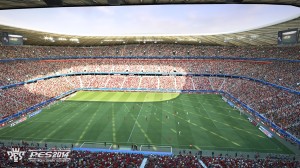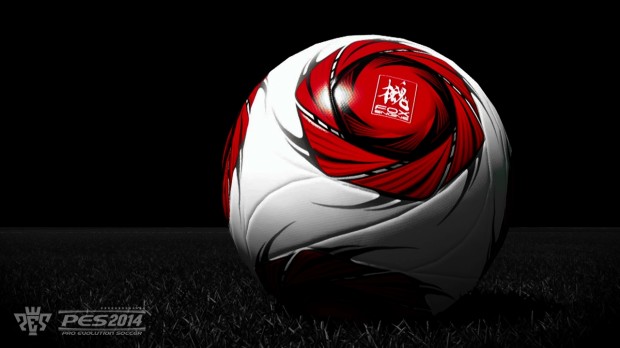Hands-On With Pro Evolution Soccer 2014
Soccer fans everywhere will be happy to fill their time up with new titles hitting the market in September, and Gamer Living got some one-on-one time with Konami and their new game to bring you the “what’s what”! Pro Evolution Soccer 2014 (PES 2014) is a new game in development with Konami’s and PES Productions, and fans have been dying to see how it will match up to other soccer games coming out. Will this new release be enough to trounce EA’s FIFA 14 in the war for top soccer game this year? Let’s take a look at some distinctive features PES 2014 is going to be implementing to find out!
The new title will be running on Kojima’s FOX Engine, which is the same engine being used for the highly anticipated Metal Gear Solid V: The Phantom Pain. Its main purpose is to cut down on development time and assist with multi-platform releases. One of the most important parts of using this engine, however, is the type of gameplay being promised to fans, including some pretty interesting upgrades: TrueBall technology, MASS (Motion Animation Stability System), Team Play, PES ID, The Core, and “more heart”.
TrueBall technology ensures that, instead of the soccer ball gravitating towards players like it’s being magnetically pulled to them, the ball moves freely as it would in real life. This way, the game becomes more challenging and true to the sport as well! MASS is similar to TrueBall, but it involves the players themselves on the field having real reactions, not pre-set moves. For instance, if you tackle another player on the field, the way he reacts (or falls) is based on which direction you tackle him, and the amount of force that’s been put behind the attack. Without this technology, games in the past often had players fall down in a mechanical and pre-set way, which was much less fluid. Team Play allows control of up to three players on the field, so you can set up better tactics in real time.
 If that wasn’t enough, Konami (in conjunction with PES Productions) took feedback they received from gamers about PES 2013 and implemented their requests into PES 2014. PES ID is one of those items, which assists in recreating the behaviours of famous players in real life, so the competition is truer to how it would play out in reality. This will add to the challenges that gamers will face while on the field, and make for a more consistent match, as the in-game All-Star players will have the same strengths and weaknesses in the game that they typically do in real life. For example, if a player is usually one to focus more on tripping up an opponent than just rushing them in a real life soccer game, you will see this reflected in PES 2014.
If that wasn’t enough, Konami (in conjunction with PES Productions) took feedback they received from gamers about PES 2013 and implemented their requests into PES 2014. PES ID is one of those items, which assists in recreating the behaviours of famous players in real life, so the competition is truer to how it would play out in reality. This will add to the challenges that gamers will face while on the field, and make for a more consistent match, as the in-game All-Star players will have the same strengths and weaknesses in the game that they typically do in real life. For example, if a player is usually one to focus more on tripping up an opponent than just rushing them in a real life soccer game, you will see this reflected in PES 2014.
Putting “the heart” behind the gameplay is with regards to the actual morale of the team. This feature will allow the support of the fans to directly impact the team’s performance. Top this off with The Core (advanced emotional facial reactions of the players), and you have yourself a soccer game that players can really get into as if it were real. Konami wanted to drive home the point that they truly want to have fans of the PES titles experience the game in a way that would be as true to life as possible, and the implementation of these features is made possible with the new game engine being used.
Now that we’ve taken a brief look at the new features, let’s dive into the gameplay. I had a chance to play a few matches as Santos FC, against FC Bayern Munich. The difference in ball maneuverability is very noticeable, and I have to give a big kudos to PES 2014 for adding a real challenge to the gameplay on this point. The amount of skill required in real life to control the direction of the ball can be used to pull off some amazing tricks, which is now a real possibility in the game and only adds to the complexity of the matches. Both the right and left analog sticks will be extremely important in controlling the ball and the player at the same time, which is something that was not always necessary before. There were also several instances where the AI actually surprised me (in a good way) as well. The AI noticeably made judgement calls on the fly, like an opponent lunging at my player when an opportunity presented itself, instead of waiting on invisible, hand-coded queues like in previous years. I couldn’t quite get the hang of Team Play (and ended up making players run around looking like idiots), but I honestly believe that was a failure on my part as a player to familiarize myself with how it works, rather than a flaw on the game’s part.
 The graphics seem very familiar when playing PES 2014. So familiar, in fact, that it was almost as if I was playing PES 2013. Where I noticed the big difference was in the facial expressions: wide and surprised faces, angry disgruntled ones, and even joyous, captivated gasps. Konami spent a lot of time developing and perfecting the players’ reactions, but what seemed to be lacking was the crowd. If the crowd directly impacts the performance of the team, it was hard to take notice of it, as the crowd itself seemed very pixilated and almost cartoonish in comparison to the rest of the stadium and the players on the field. To top it off, while this is only a very early version of the game, it chugged on several occasions while I was playing. I noticed it freezing for a few brief moments during gameplay, and more noticeably right before playbacks or during player close-ups. Keep in mind this was only a demo, being played on a brand new engine, and they may not have worked out all the kinks yet.
The graphics seem very familiar when playing PES 2014. So familiar, in fact, that it was almost as if I was playing PES 2013. Where I noticed the big difference was in the facial expressions: wide and surprised faces, angry disgruntled ones, and even joyous, captivated gasps. Konami spent a lot of time developing and perfecting the players’ reactions, but what seemed to be lacking was the crowd. If the crowd directly impacts the performance of the team, it was hard to take notice of it, as the crowd itself seemed very pixilated and almost cartoonish in comparison to the rest of the stadium and the players on the field. To top it off, while this is only a very early version of the game, it chugged on several occasions while I was playing. I noticed it freezing for a few brief moments during gameplay, and more noticeably right before playbacks or during player close-ups. Keep in mind this was only a demo, being played on a brand new engine, and they may not have worked out all the kinks yet.
There are definitely some changes that will impact the way gamers play soccer in the coming year, and while we could not get more information on what teams, players, or customizations will be available, keep an eye open for press releases coming soon from Konami on these subjects! PES 2014 will also be available on PC, PlayStation 3, and Xbox 360 on September 20, 2013.
About This Post
